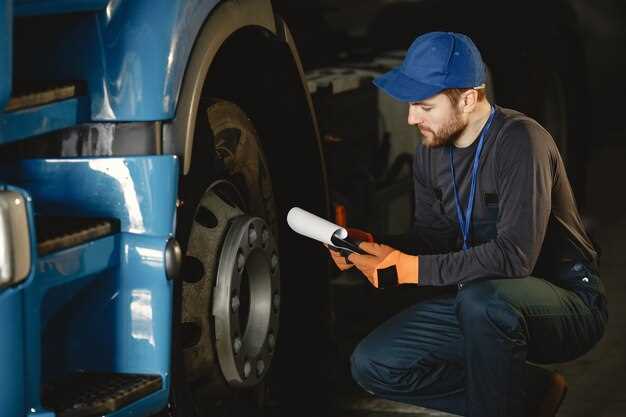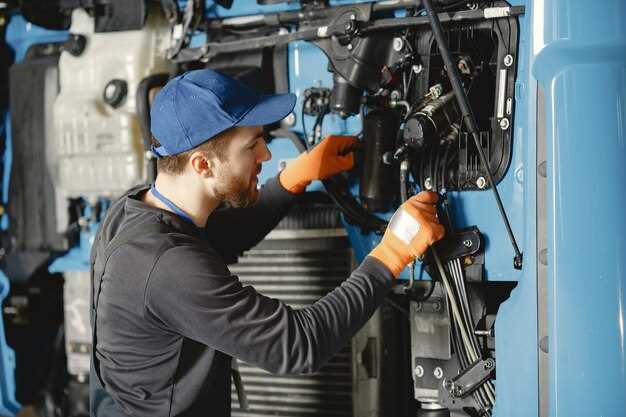
Proper functioning of air brakes is crucial for the safety and efficiency of commercial trucks. Understanding the mechanics behind braking systems is essential for drivers and maintenance personnel alike. A common issue that arises in these systems is the presence of leaks. These leaks can significantly impair brake performance, leading to dangerous situations on the road.
Detecting air leaks in brake systems requires a combination of visual inspections and systematic testing. Leak detection is not just about identifying where the issue lies, but also understanding how it impacts the overall braking system. By recognizing the symptoms of air brake leaks, technicians can address potential hazards before they escalate, ensuring the longevity of vehicle components and the safety of all road users.
In this article, we will explore the main causes of air brake leaks, the diagnostic techniques used to identify them, and the importance of timely intervention. The goal is to equip truck operators with knowledge that not only enhances their repair skills but also promotes safer driving practices.
Identifying Common Symptoms of Air Brake Leaks
Air brake systems are critical for the safe operation of commercial trucks. Detecting leaks in these systems is essential to ensure optimal performance and safety. Here are some common symptoms that indicate potential air brake leaks.
1. Constantly Dropping Air Pressure: One of the most immediate signs of a leak is a noticeable decrease in air pressure within the brake system. If the pressure falls below the manufacturer’s recommended levels while the truck is parked, it suggests a possible leak.
2. Hissing Noises: Listen for any hissing or hissing sounds while the brakes are engaged or when the truck is stationary. This sound often indicates air escaping from a leak in the lines or components of the brake system.
3. Reduced Brake Response: If drivers notice that the brake system feels less responsive or requires more force to engage, it may be a symptom of decreased air pressure due to a leak. This can lead to longer stopping distances, posing a serious safety risk.
4. Warning Lights: Many modern trucks are equipped with electronic monitoring systems that can detect drops in air pressure. If the air brake warning light illuminates on the dashboard, it is an indication of a potential problem within the air brake system, possibly linked to a leak.
5. Visual Inspection: Occasionally, visual signs can help in detecting leaks. Look for any visible cracks, worn-out seals, or moisture accumulation around brake lines and fittings. These visual cues can indicate where the air is escaping.
6. Increased Air Compressor Cycling: If the air compressor runs more frequently than normal, it could be trying to compensate for lost pressure due to a leak. Monitoring the compressor’s operation can provide insights into the health of the air brake system.
Each of these symptoms can indicate an urgent need for leak detection and remediation in air brake systems. Promptly addressing these issues not only enhances safety but also ensures compliance with regulatory standards.
Step-by-Step Leak Detection Techniques for Air Brake Systems

Detecting leaks in air brake systems of commercial trucks requires a systematic approach to ensure safety and functionality. Follow these detailed steps for effective leak detection:
1. Visual Inspection: Begin with a thorough visual inspection of the entire air brake system. Check all components, including air hoses, fittings, and connections for signs of wear, damage, or loose connections. Look for any visible cracks or abrasions that may indicate a leak.
2. Listen for Hissing Sounds: While the engine is running, listen carefully for any hissing noises around the brake system components. These sounds are often indicative of air escaping from leaks. Pay close attention to areas around the air tanks, valves, and brake chambers.
3. Soap Solution Test: Prepare a mixture of water and soap, then apply it to suspected leak areas, such as connections and fittings. If bubbles form, this indicates that air is escaping, confirming the presence of a leak.
4. Pressure Test: Use an air pressure gauge to monitor the air pressure in the brake system. Start by charging the system and then turn off the engine. Observe if the pressure drops significantly within a specific timeframe. A notable drop suggests a leak in the system.
5. Use of Electronic Leak Detector: For a more advanced detection method, utilize an electronic leak detector. This device can identify even small leaks by sensing airborne particles or changes in airflow around brake components. Move the detector around suspected areas, and follow its signal to pinpoint leaks.
6. Inspect Brake Chambers: Remove and inspect the brake chambers individually. Check the diaphragm condition and ensure there are no tears or defects. Any damage in the brake chambers can lead to air leaks that affect system performance.
7. Test Brake Lines: Disconnect the air lines connected to the compressor and conduct a pressure test. By blocking the lines and checking for pressure retention, you can determine if the lines are holding air properly or if there are leaks present.
8. Systematic Component Testing: If a leak is not found through earlier methods, systematically test each component of the air brake system, such as solenoids, valves, and regulators. This step is crucial, especially if previous tests did not yield conclusive results.
By following these step-by-step techniques, you can effectively diagnose and address air brake leaks in commercial trucks, ensuring optimum performance and safety on the road.
Tools and Equipment Needed for Effective Air Brake Leak Diagnosis

Identifying air leaks in brake systems is critical for the safety and efficiency of commercial trucks. To accurately diagnose air brake leaks, a selection of specialized tools and equipment is essential. Here are the key items you will need:
- Air Pressure Gauge: This tool measures the air pressure in the brake system, allowing technicians to identify discrepancies that may indicate leaks.
- Leak Detection Spray: A specialized aerosol used to find leaks. When sprayed on joints, fittings, and hoses, it forms bubbles at the site of a leak, making detection easier.
- Ultrasonic Leak Detector: This device detects high-frequency sounds generated by escaping air. It can pinpoint leaks that are difficult to see or hear, especially in noisy environments.
- Wrenches and Socket Sets: Essential for tightening or replacing fittings, hoses, and other components that may contribute to air leaks.
- Air Line Cutters: Useful for removing damaged sections of air lines during repair or replacement processes.
- Tire Pressure Monitoring System (TPMS) Tool: Many modern vehicles incorporate air brake systems in conjunction with tire pressure systems. Using a TPMS tool can help diagnose issues related to air pressure.
- Crown Sealant or Adhesive: For repairing minor leaks in hoses or fittings that do not require complete replacement.
- Vacuum Gauge: Although typically used for vacuum systems, a vacuum gauge can assist in diagnosing problems related to brake boosters that influence air intake.
Having the appropriate tools can streamline the air brake leak diagnosis process. By utilizing these equipment items effectively, technicians can ensure quick identification and resolution of leaks, thereby maintaining the integrity and performance of commercial truck braking systems.




